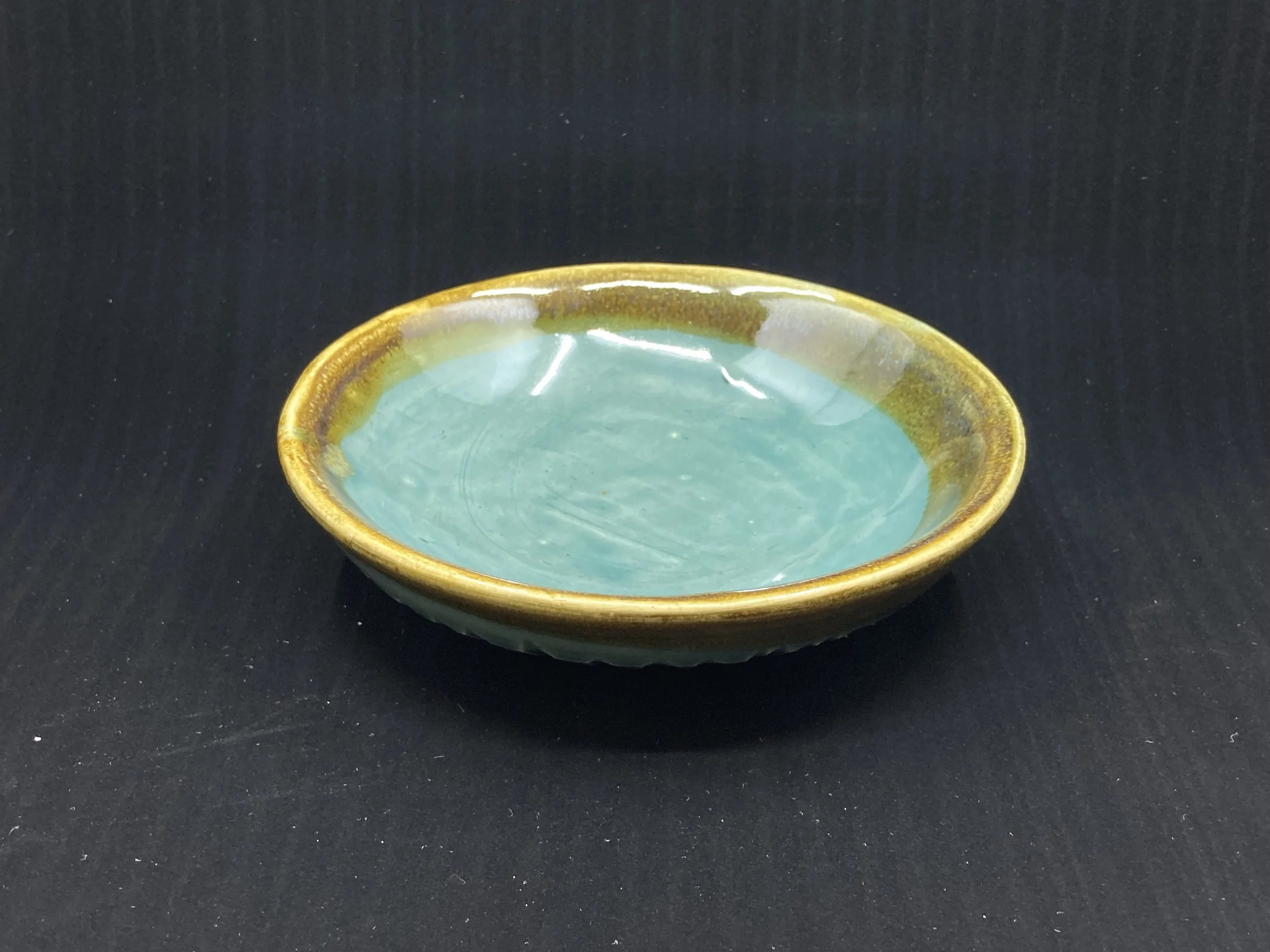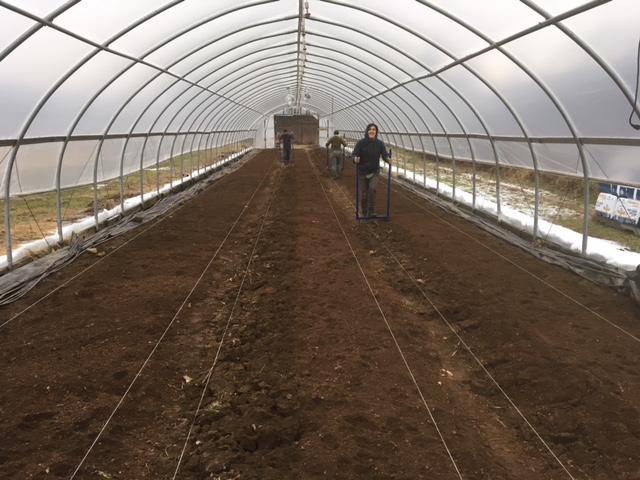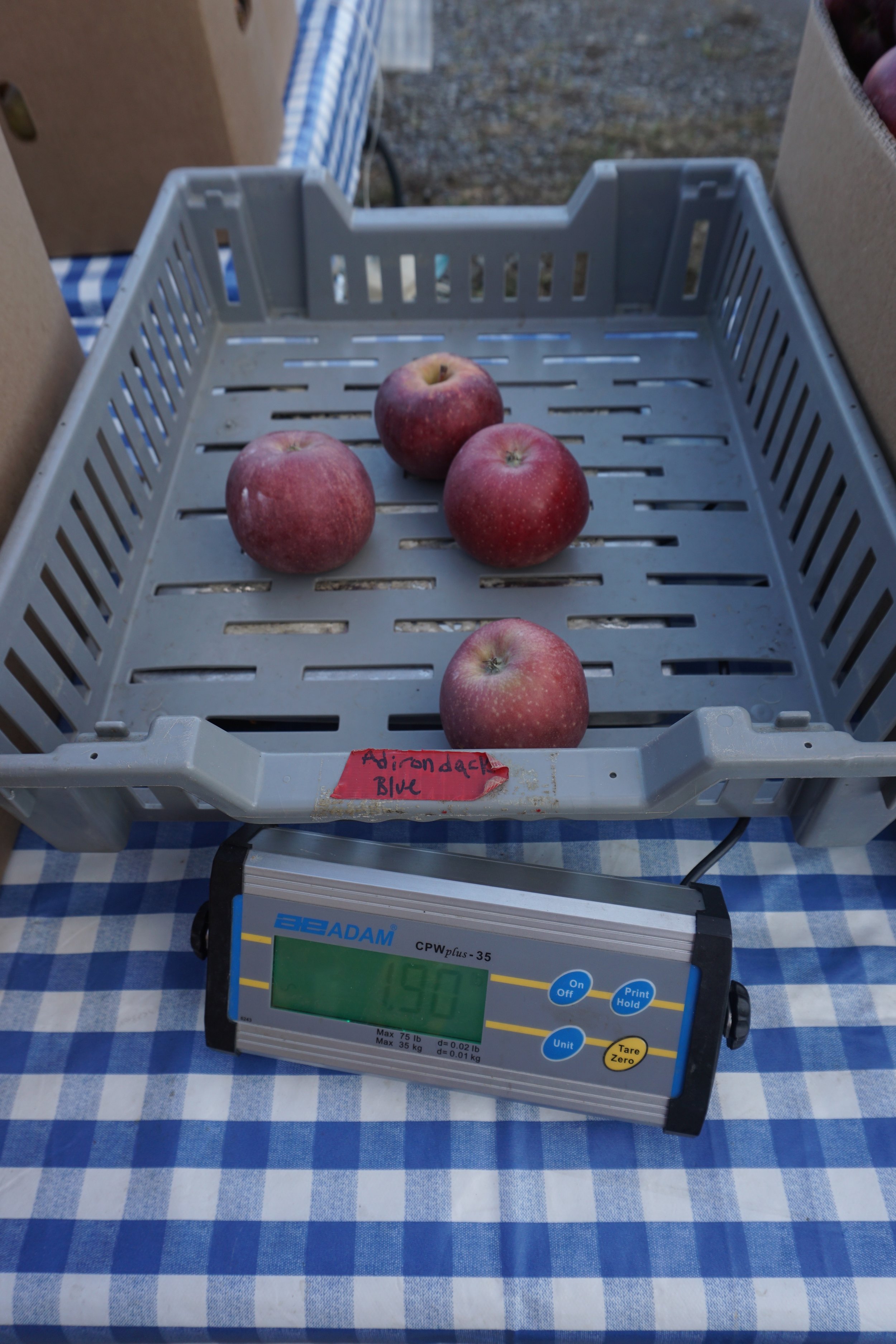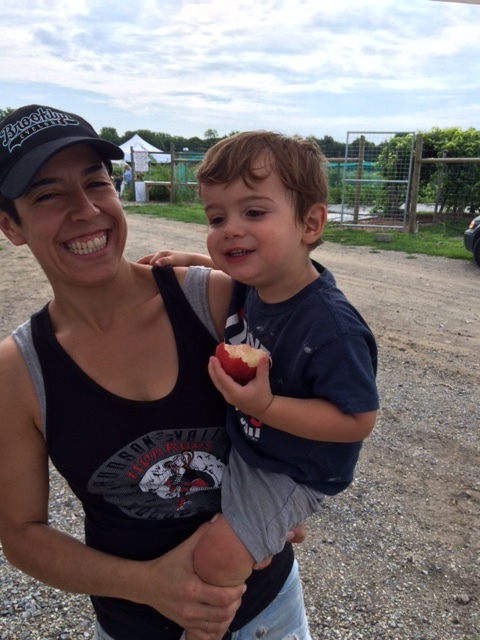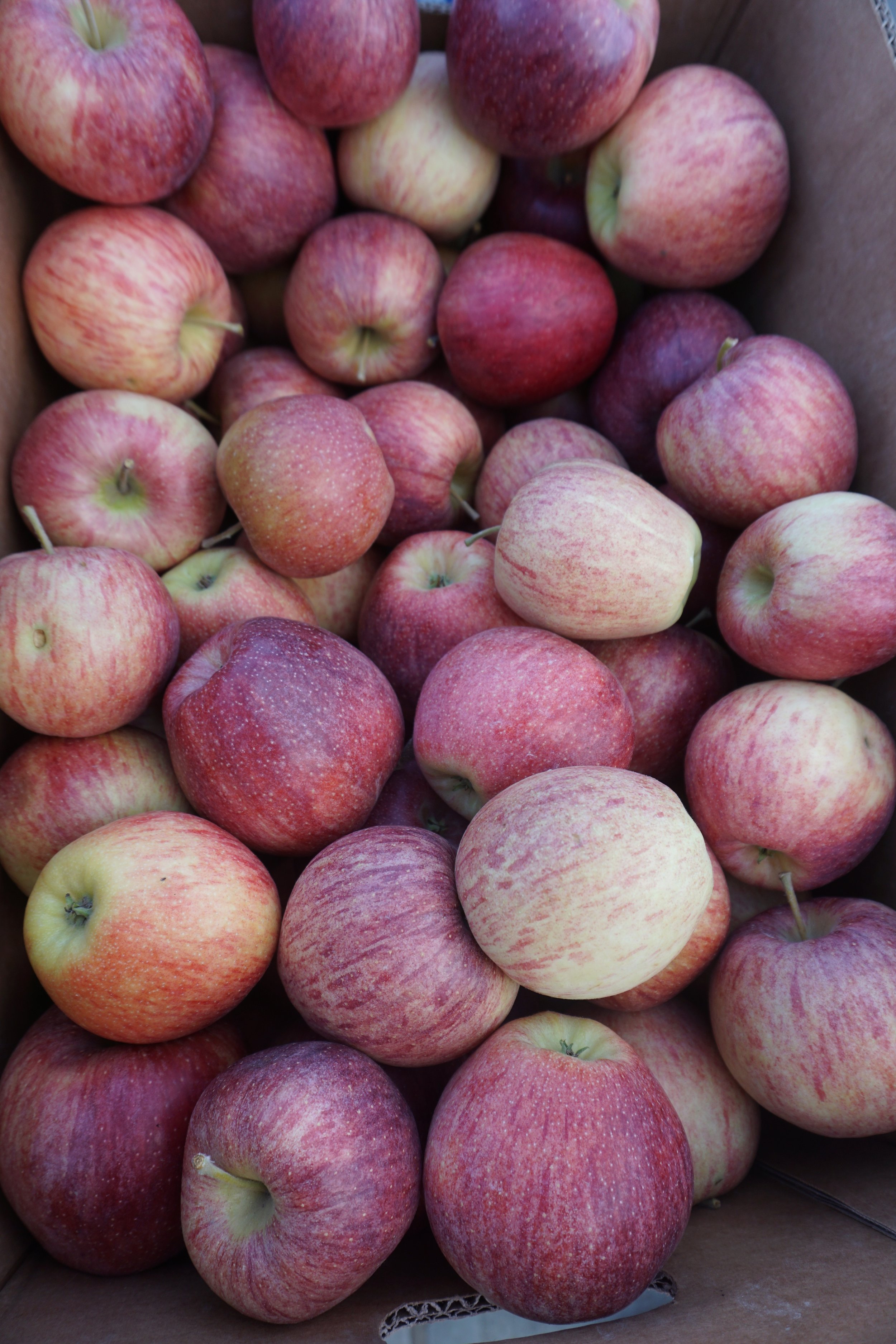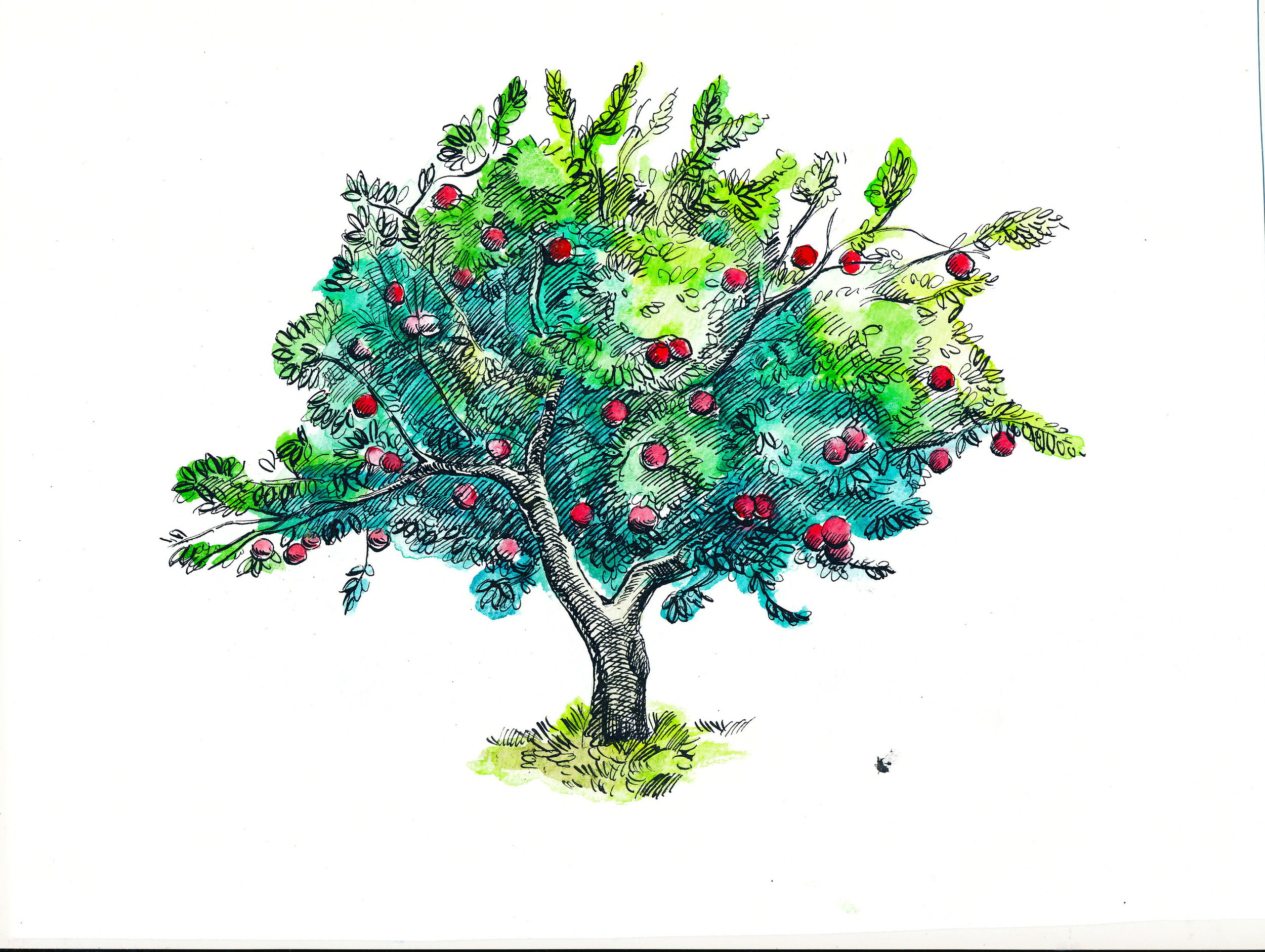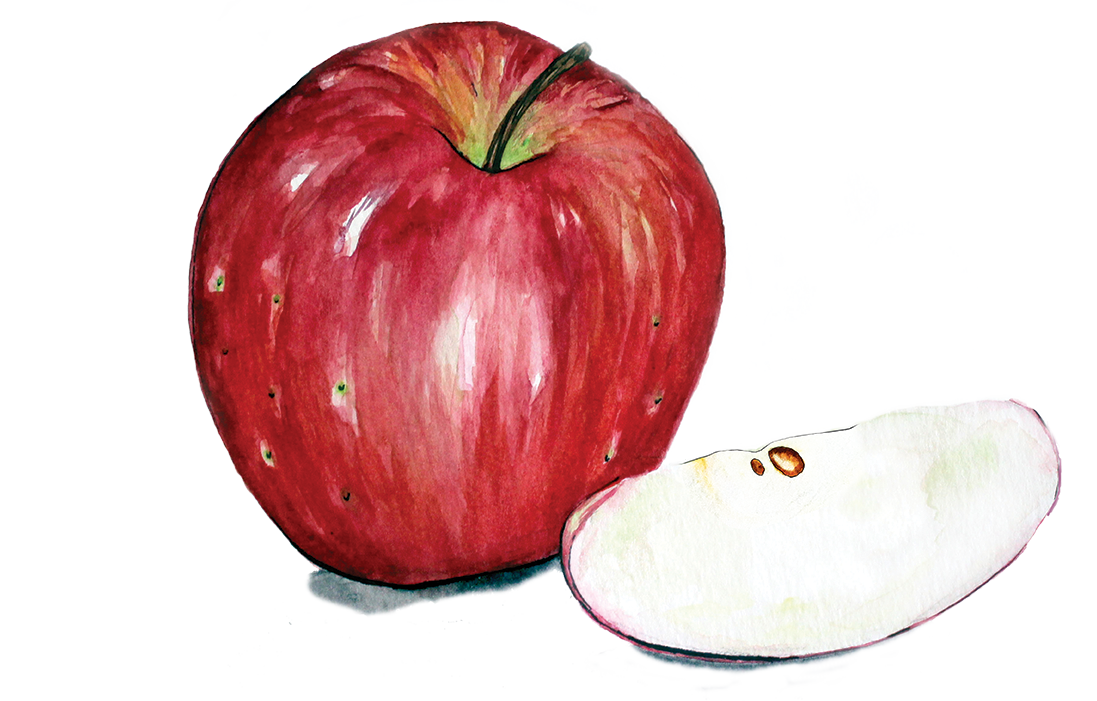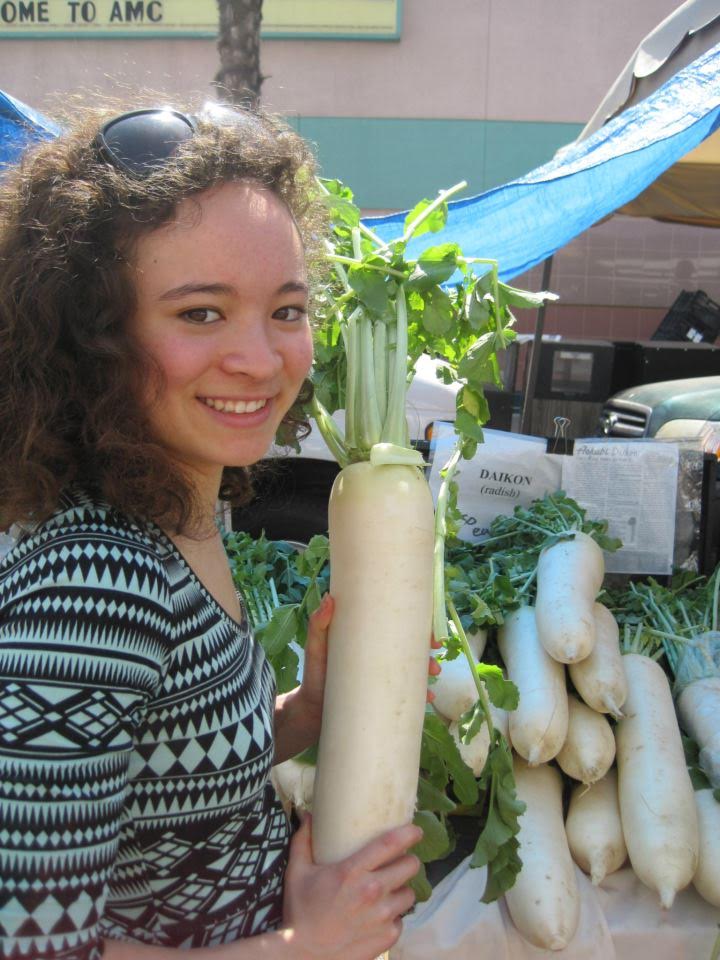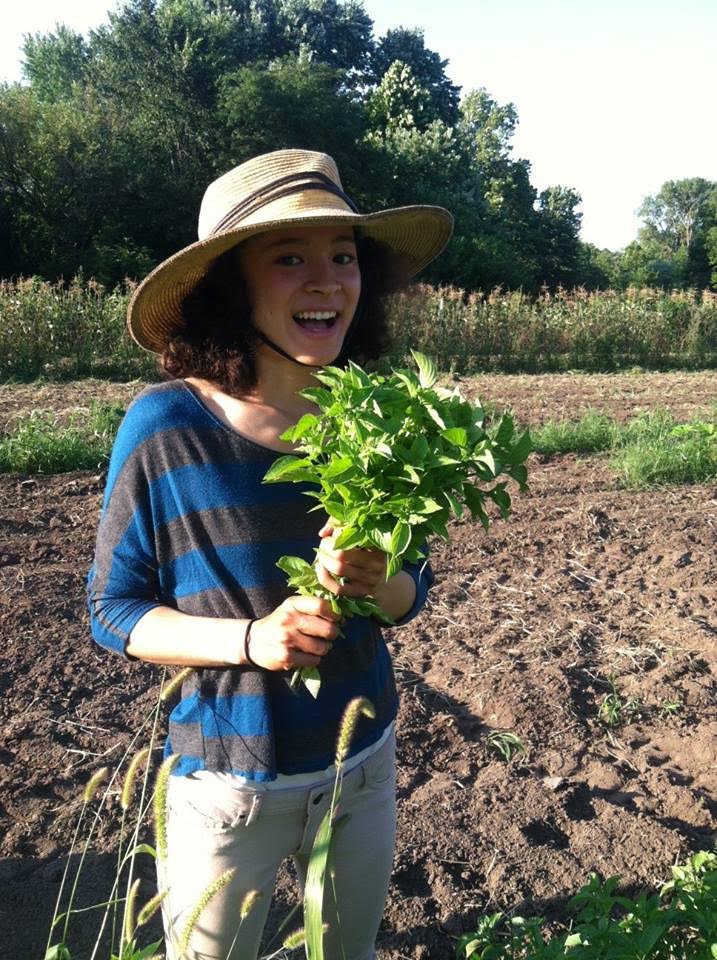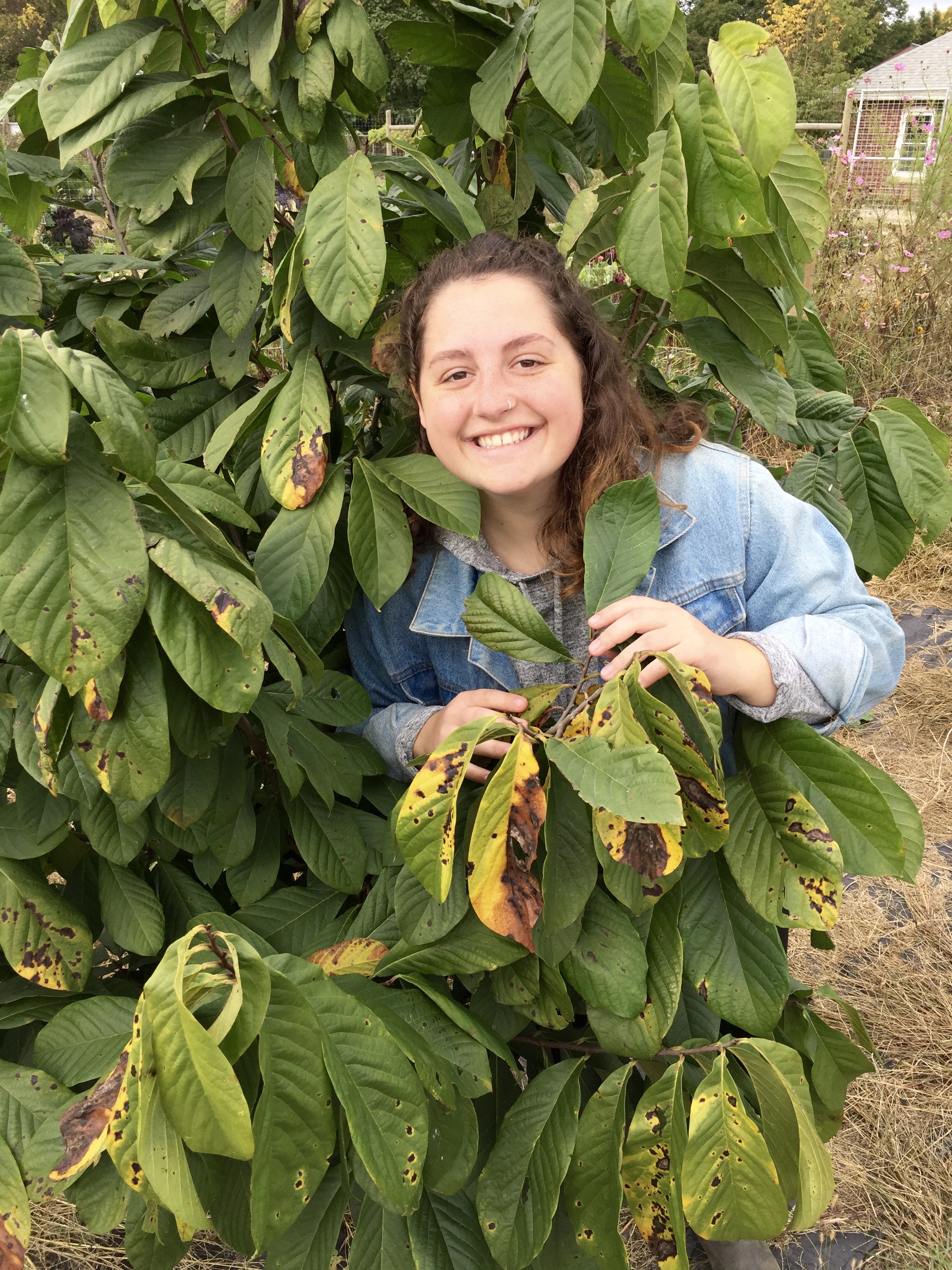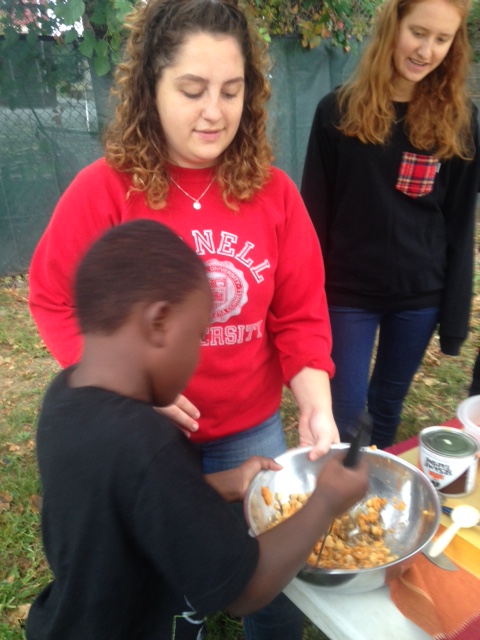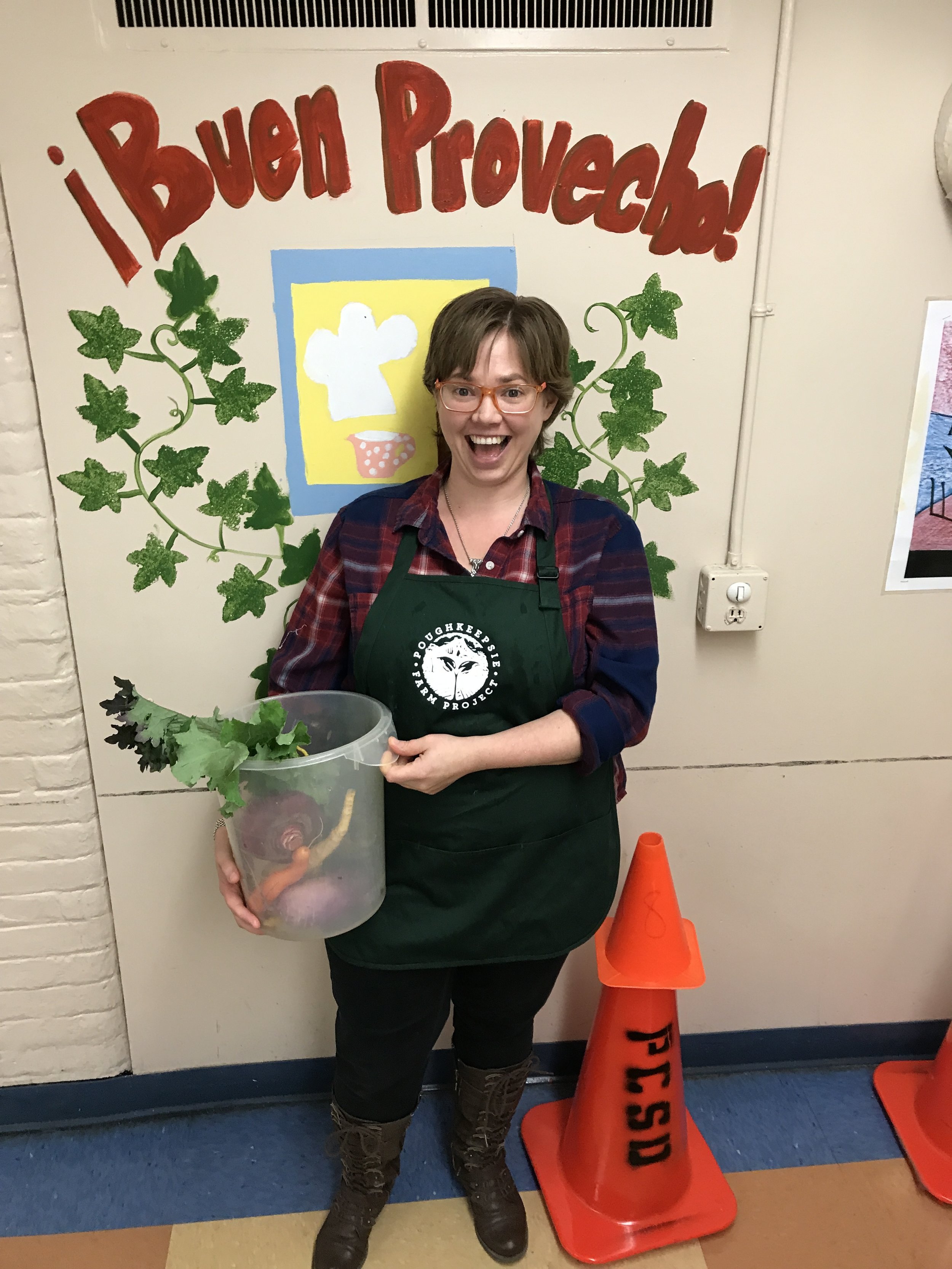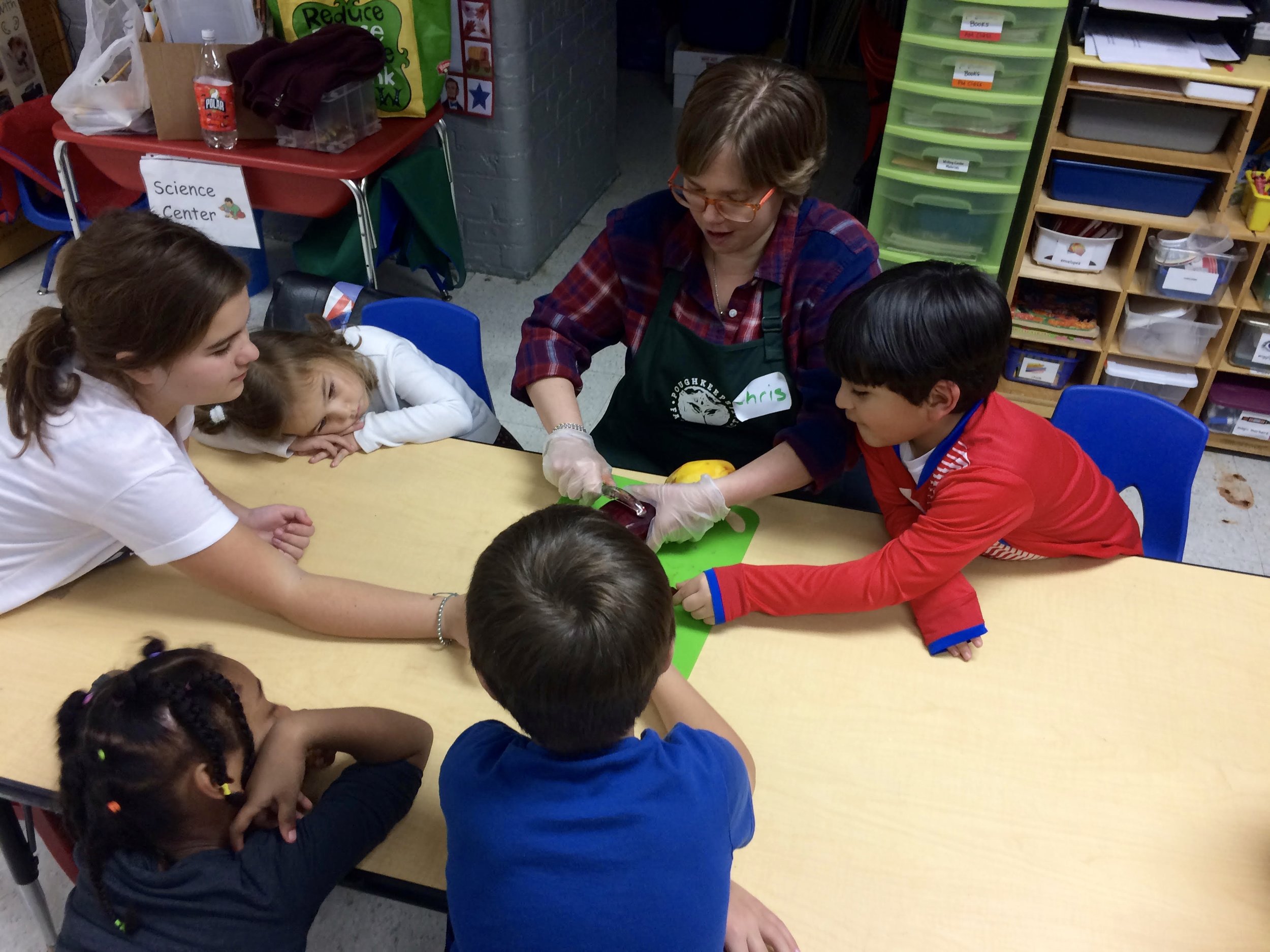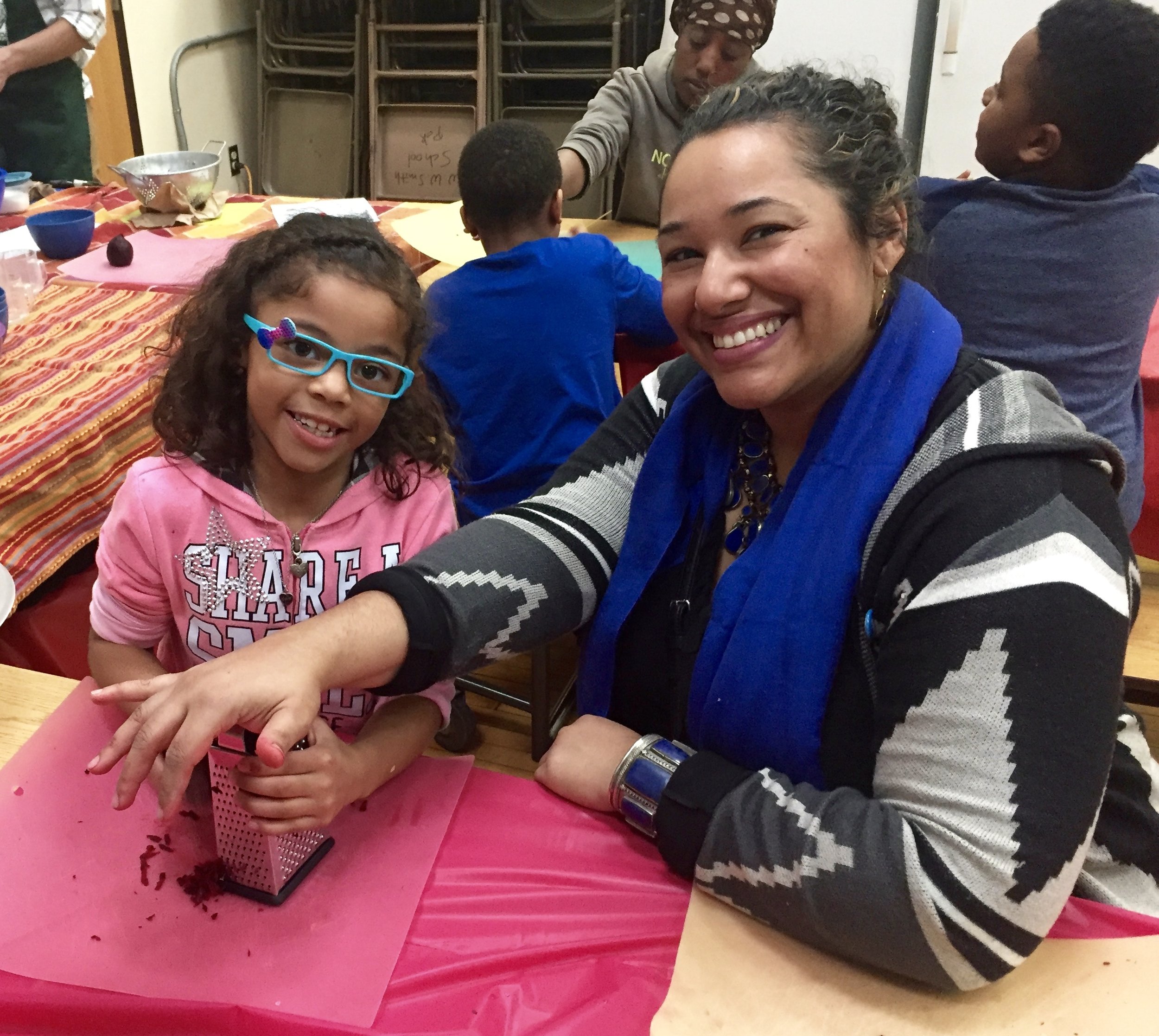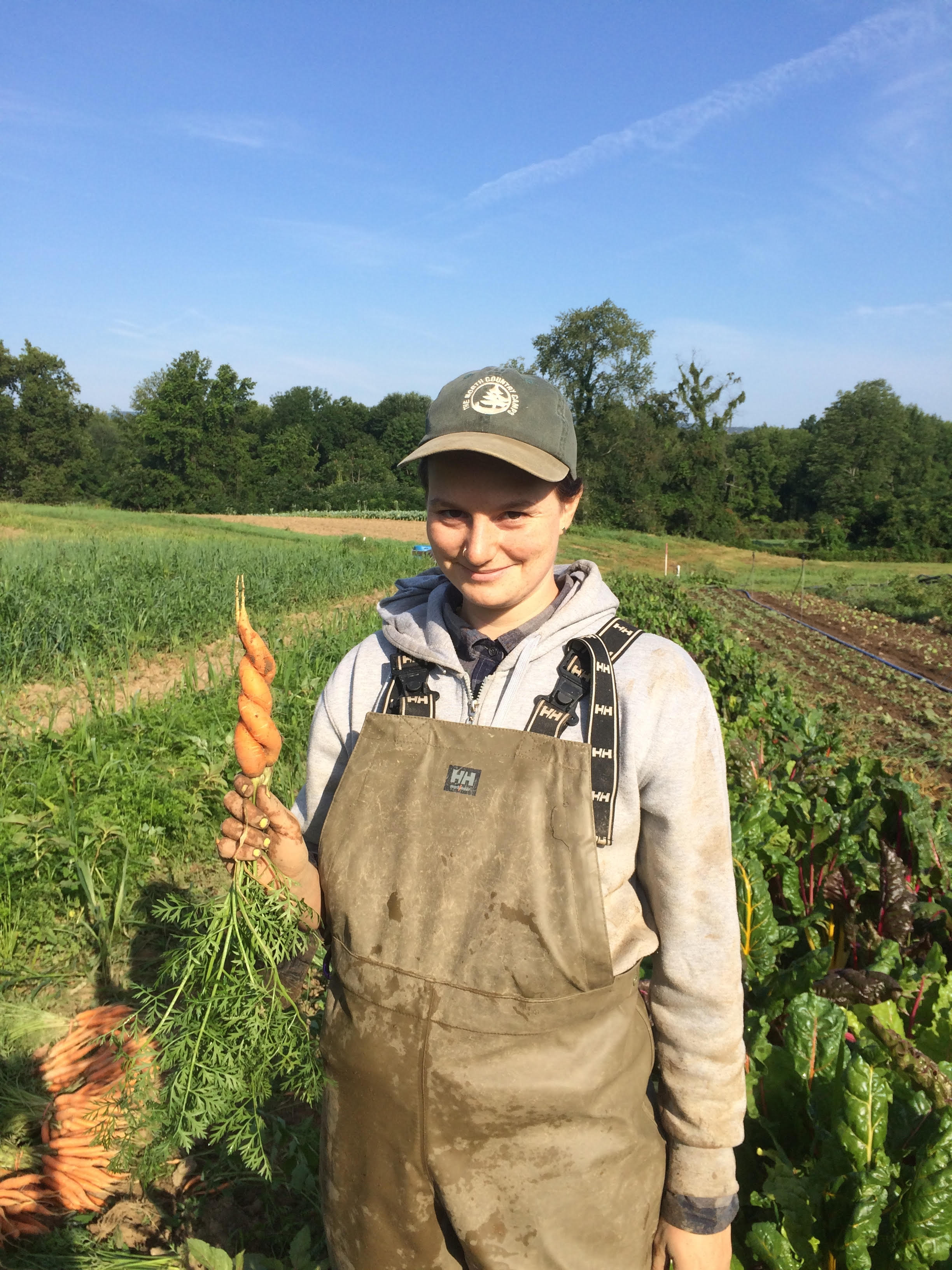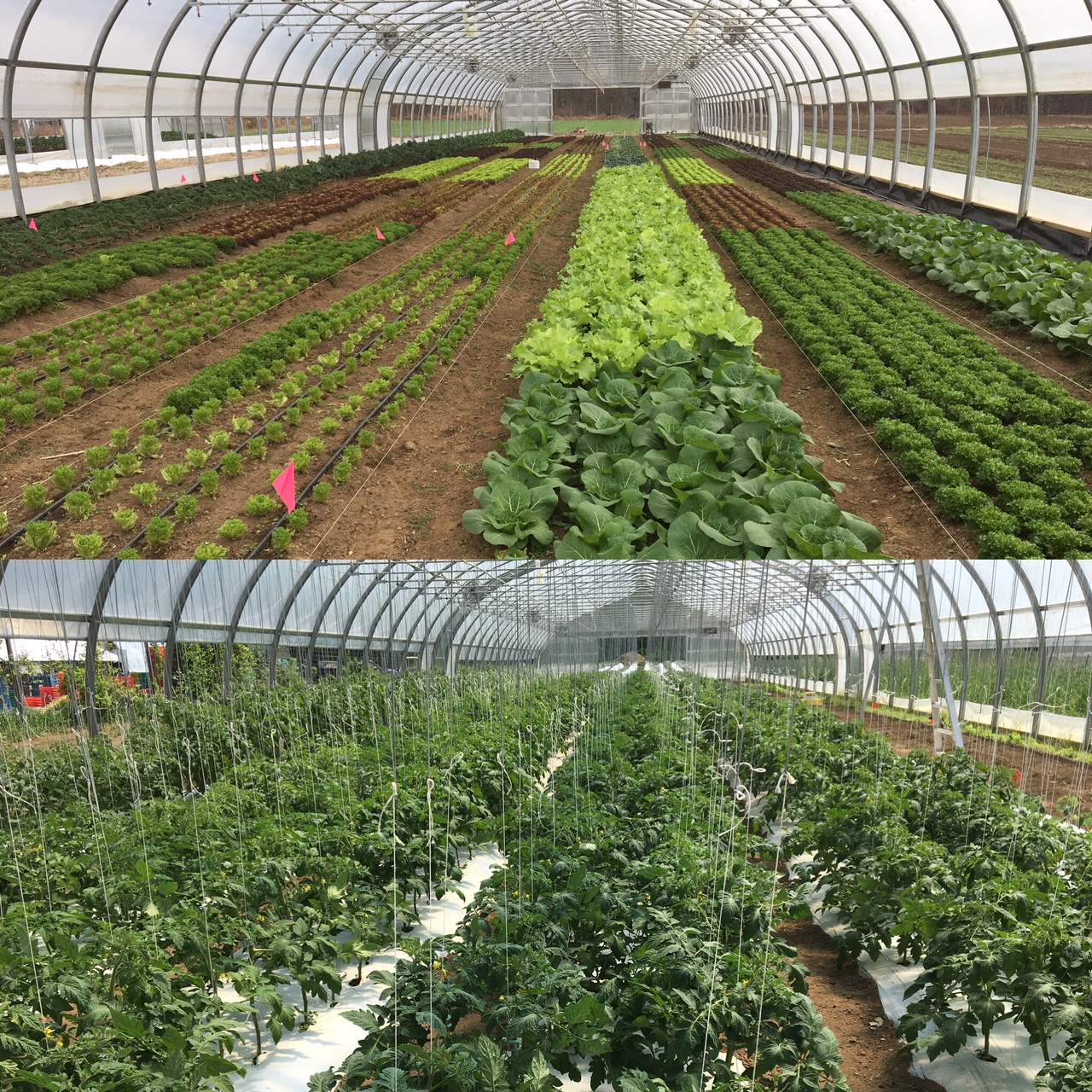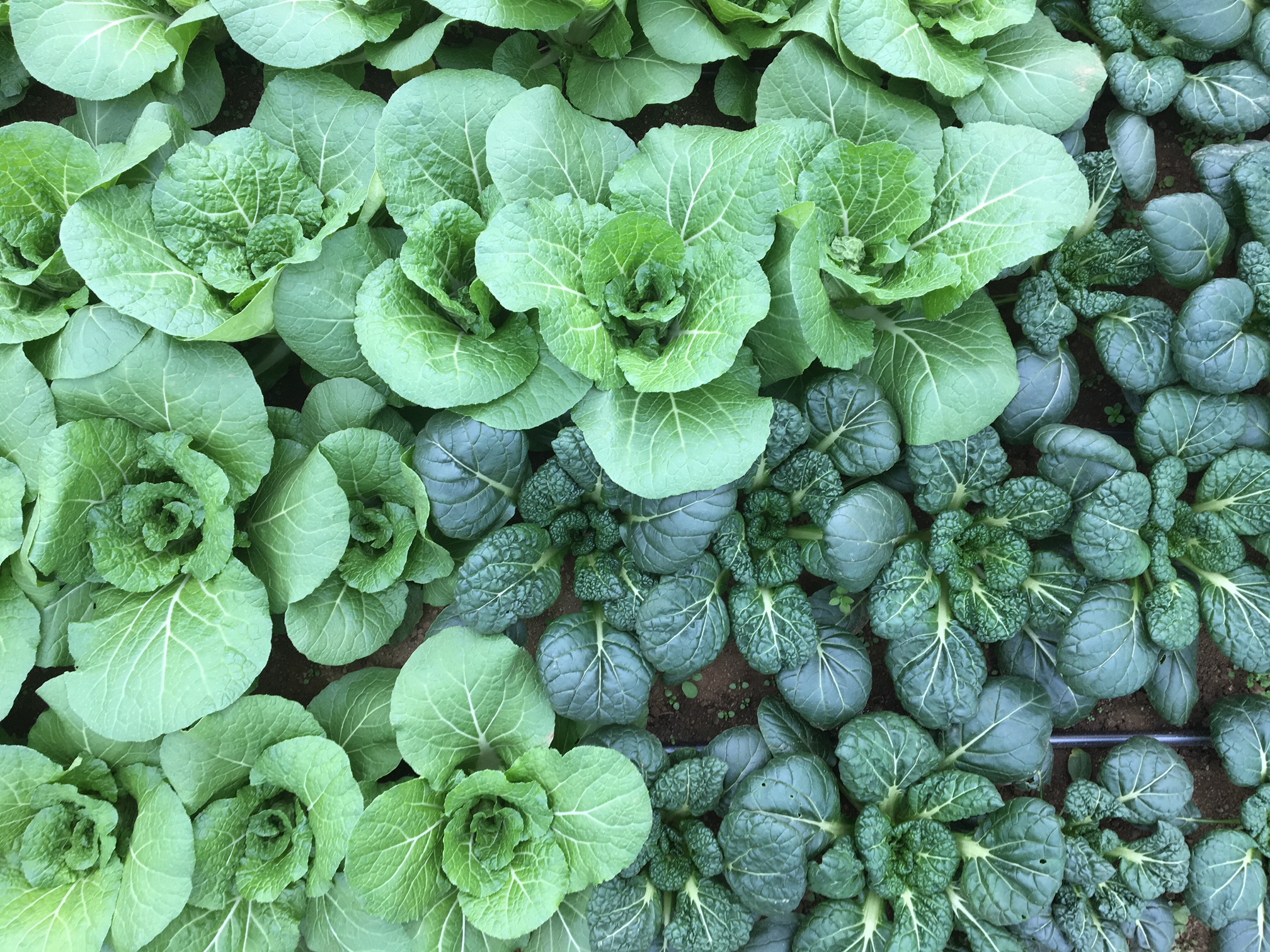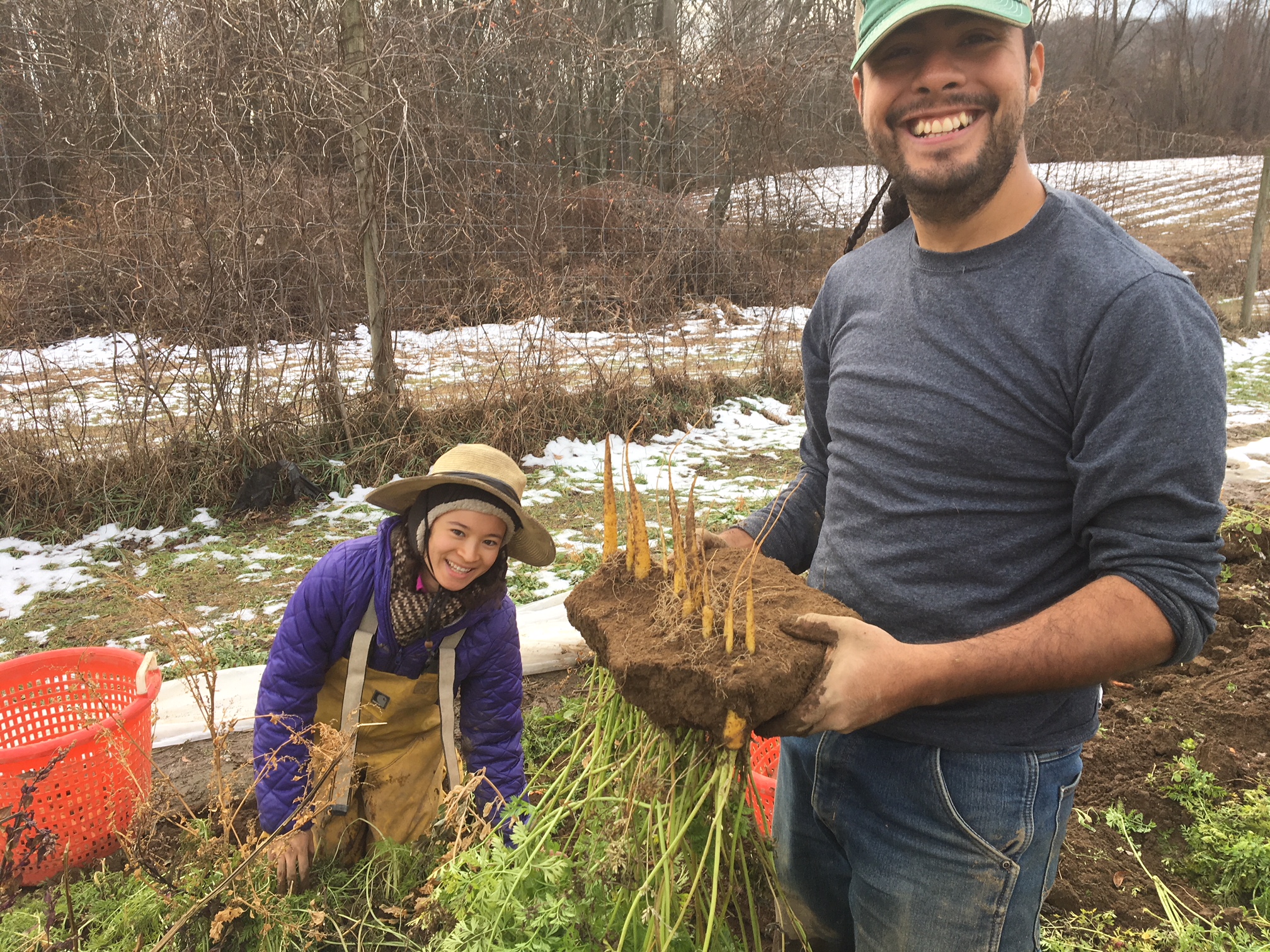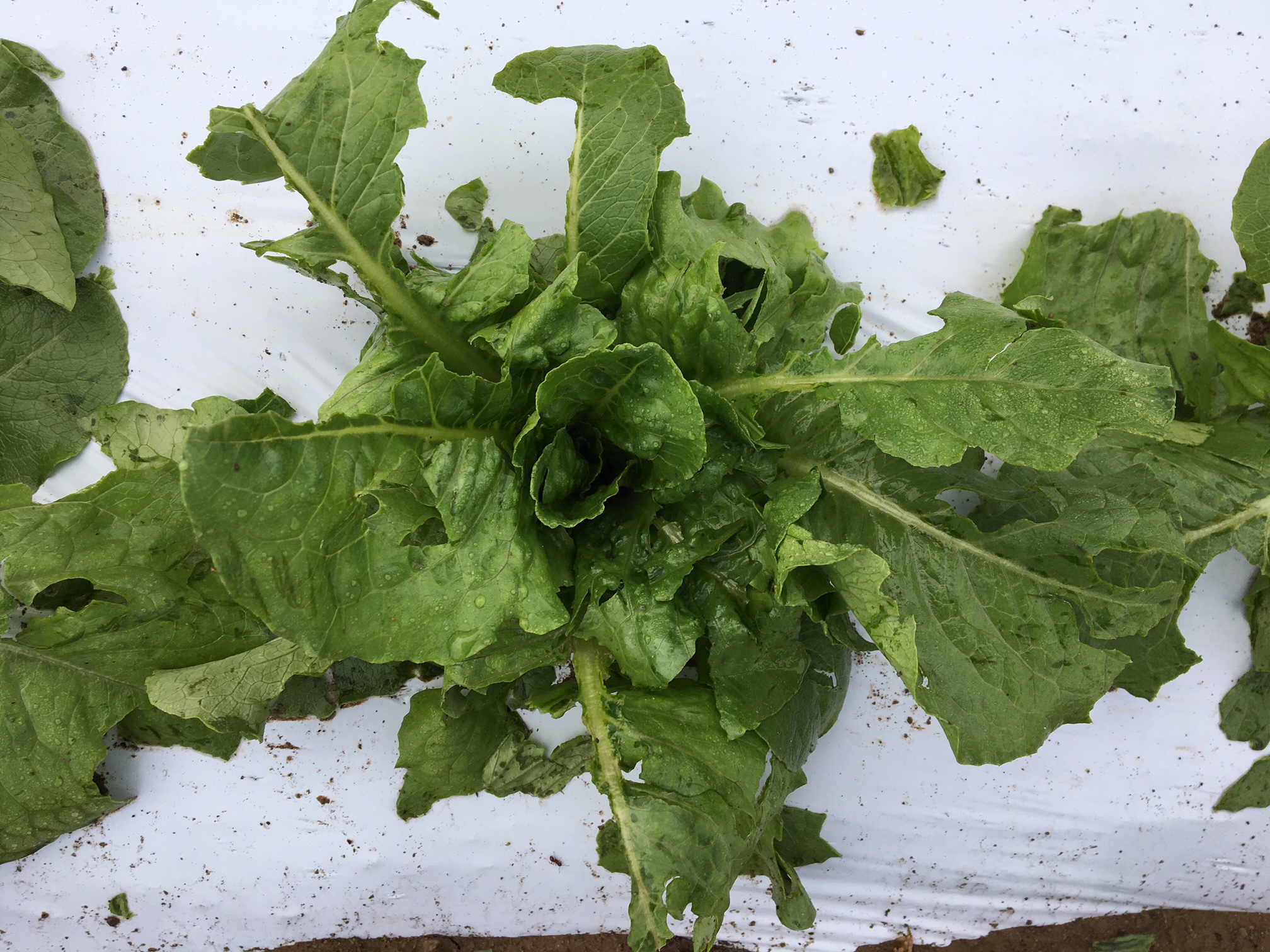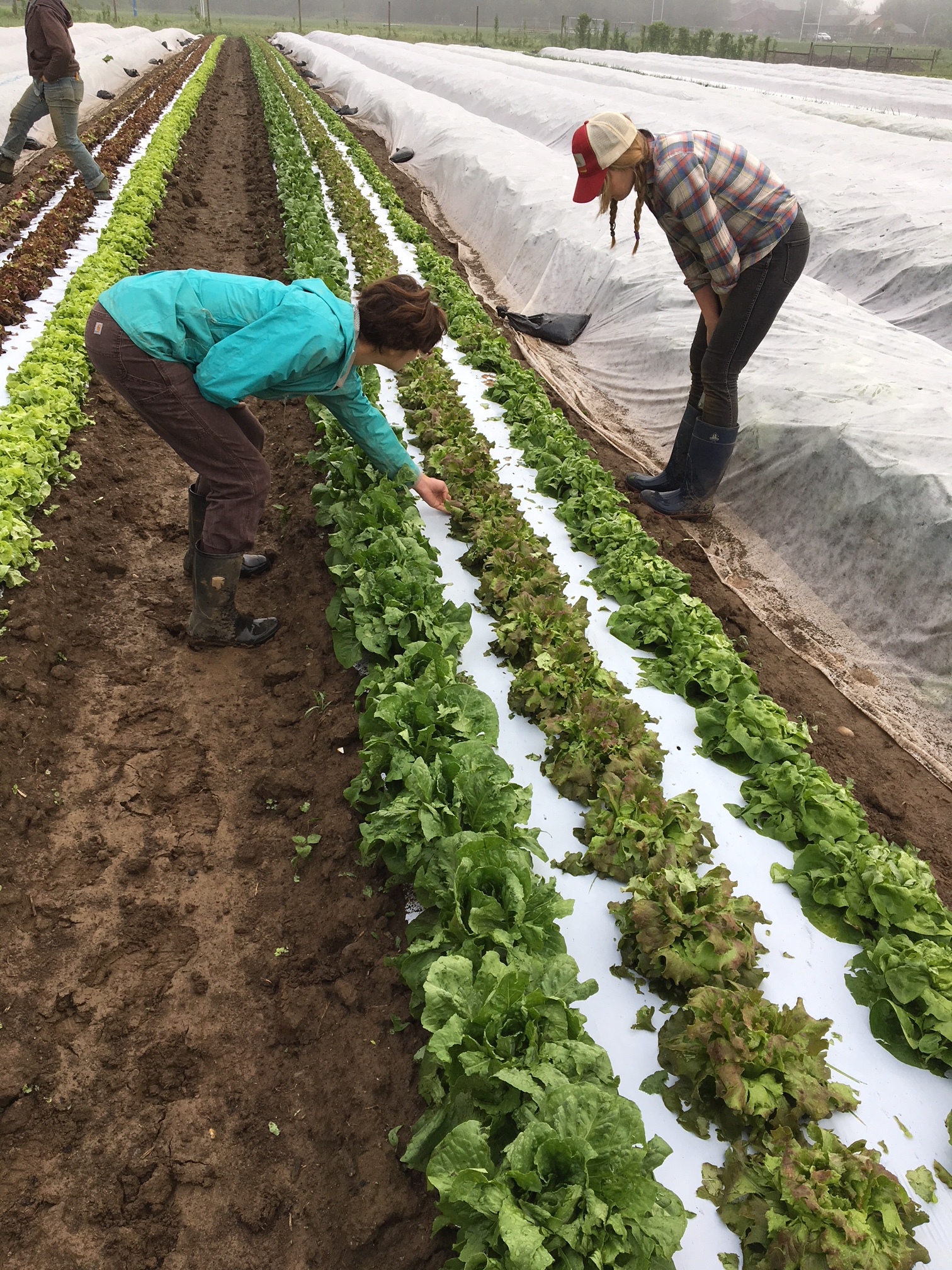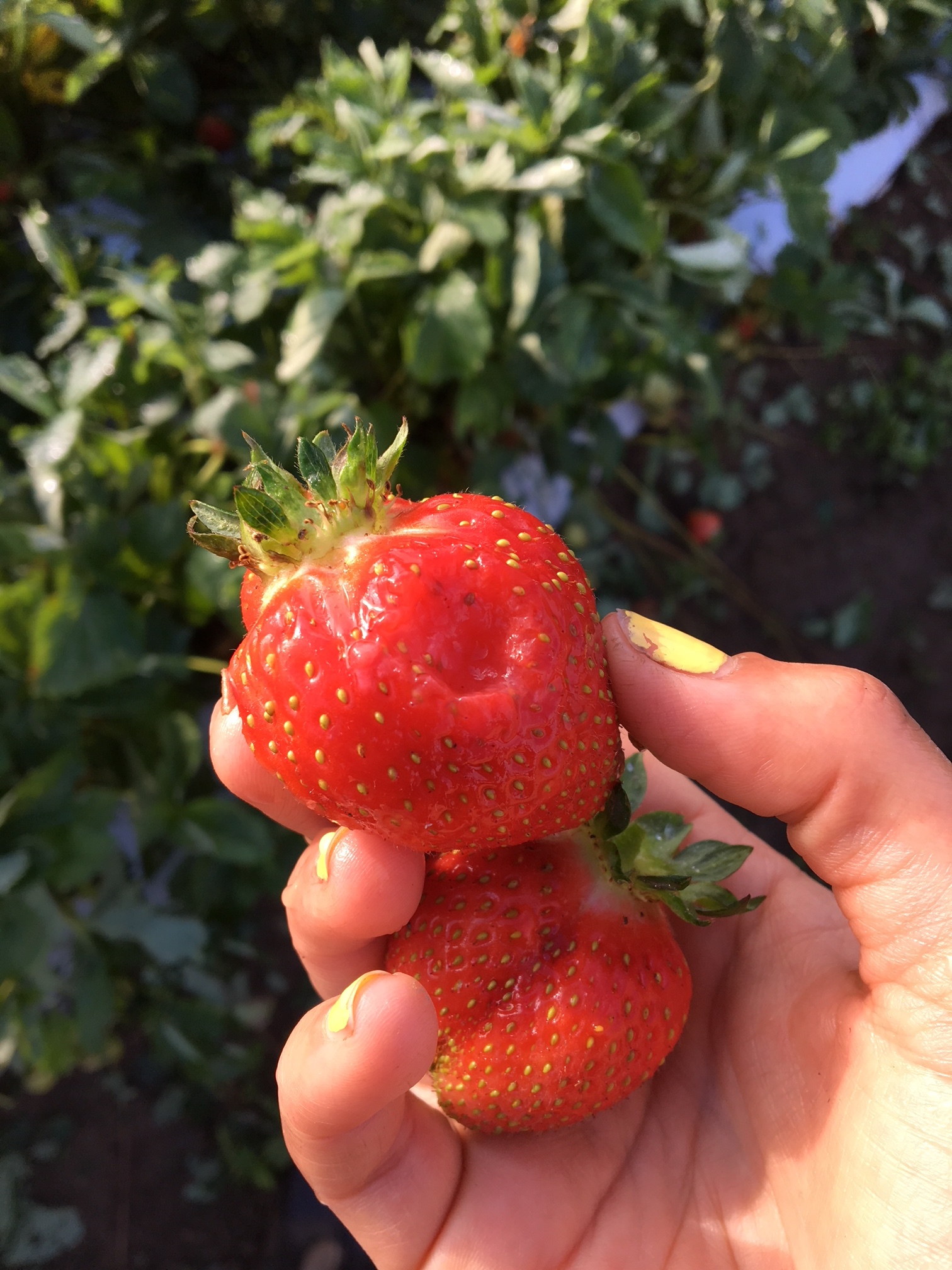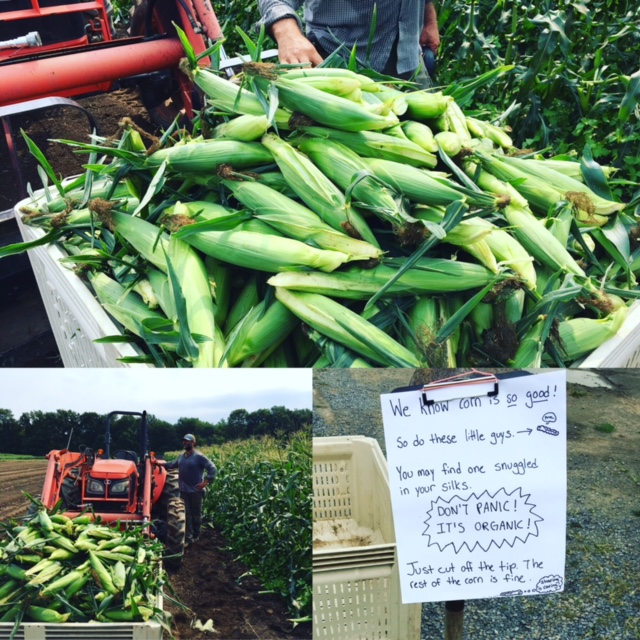March Grower’s Row: Spring is Springing
By Lauren McDonald
Happy almost spring! Just in case you missed the weather last week, here’s a quick recap:
It was 40. Then it was 80. The next day it was snowing.
Ah, March. It should come as a surprise to precisely no one than you, you wild crazy month, are responsible for this trickery.
Despite having experienced all four seasons in the span of a few days, it is still officially winter (we had to check the calendar to make sure) – but not for long. Increasingly longer days mean that our winter routine is already giving way to the considerations of spring.
Precision seeder with Brassica greens mix
Newly germinated greens in the high tunnel
Over the winter, our days have been occupied with harvesting greens and washing roots for our bi-weekly Winter CSA, and filling wholesale orders (including deliveries to Vassar College, where our produce appears in the dining halls). Thanks to our Vassar students and volunteers, we’ve also been chipping away at projects like fence clearing, bed prepping, organizing, and cleaning. On particularly inhospitable days, we take cover indoors to update our record keeping, prepare for the arrival of new staff, and prepare ourselves for a change in responsibilities, as many of us transition to new roles.
Now, as the days lengthen, we’ve been watching things shift in the high tunnels. The few remaining Asian greens are starting to flower, meaning we get to eat the delicious raab, or flowering stalks. Beds that have been cleared of winter greens have been direct seeded with arugula, mustard mix and radishes – which are germinating beautifully, and will hopefully grow fast enough to be harvestable and cleared out by the time we need to plant tomatoes in early April.
Yes. That means we are seeding tomatoes THIS WEEK, the very first week of March. About 3 weeks later we’ll pot them into larger cells, and by early April they’ll go into the protected grounds of the tunnels. Some of these tomatoes—as well as a diverse array of other vegetables, herbs, flowers, deer-resistant plants (ones that often have strong oils or textures that deer can’t digest) and plants that are good for pollinators—will be destined for our Plant Sale in early May.
This will be our second year growing high tunnel tomatoes, and we’ve learned a lot from last year. Here are a few changes we’re making to incorporate lessons we learned last season:
- We’re growing heirloom varieties that are more consistent and better suited to tunnel production
- We’ve timed our plantings to better balance wholesale markets and CSA needs
- We’ve adjusted our bed spacing plans and pruning methods to use the systems that worked best last year
If all goes well, we’ll harvest them from July through October. Hard to picture that right now in March!
What’s even harder to believe is that we’re also starting seeds for CSA crops that members won’t actually eat until September (onions), October (leeks), and even next January (celeriac)! Between tunnel and CSA plantings and plant sale crops, we’ll be starting 50,648 seedlings during the first three weeks of March.
In short, spring is most definitely springing… and we, too, are springing to action, ready to meet it. To get in on the fun, sign up for your 2018 CSA share here, and mark your calendar for the PFP Plant Sale May 5 and 12. It’s not too soon to start thinking about your own gardens, or about welcoming the summer bounty that we’re already setting in motion.





